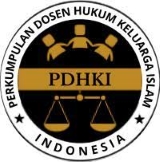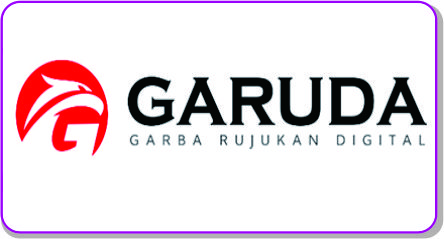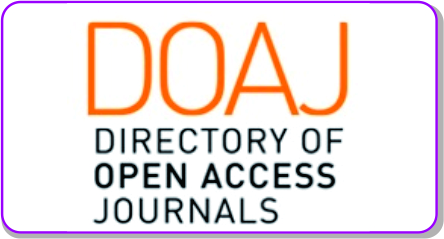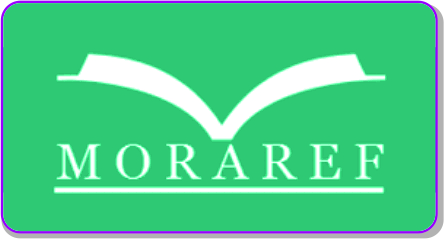Online Submissions
Already have a Username/Password for Jurnal AL-MAQASID: Jurnal Ilmu Kesyariahan dan Keperdataan?
Go to Login
Need a Username/Password?
Go to Registration
Registration and login are required to submit items online and to check the status of current submissions.
Author Guidelines
Manuscript Submission Checklist
Writers who want to submit a manuscript should pay attention to the points below. If the manuscript does not meet the requirements that have been listed, there is a possibility that the manuscript will be returned.
- The manuscript is in accordance with the Writing Guidelines and Templates of AL-MAQASID: Journal of Sharia and Civil Sciences.
- The manuscript has never been published before in another journal.
- Published manuscripts must be free from plagiarism. If the manuscript check results have a Similarity Index of more than 25% (except citations and references) the manuscript will be returned to the author for correction.
- Sending files in Rich Text Format (RTF).
- The manuscript is written in accordance with the Citations and Bibliography guidelines, which is by using The Chicago Manual of Style 17th Edition (Full Notes) (We require authors to use Mendeley/Zotero).
Author's Guide
Article Requirements
- AL-MAQASID: The Journal of Sharia and Civil Sciences uses the IMRaD (Introduction, Method, Results and Discussion) document format in writing the manuscript. Our goal in using this format is because the IMRaD structure has been proven to facilitate literature review, allowing readers to track articles faster to find material relevant to their goals. This allows the most relevant information to be presented clearly and logically to the reader, by summarizing the research process in an ideal order and without unnecessary detail.
- The manuscript submitted is an original scientific work and does not contain elements of plagiarism.
- The manuscript is written in good and correct standard Indonesian or Indonesian, with a minimum length of 20 pages and a maximum of 30 pages, A4 paper size, Garamond typeface, font 12, and a space of 1.1.5.
Format Article
- The format of the manuscript consists of the title of the article, the author's name, the author's affiliation, the author's address, the author's email (it is enough to write the email of the main author or correspondent), abstract, introduction, research method, research results and discussion, summary and bibliography.
- The title must be attractive and straightforward and formulated in a maximum of 12 words (Indonesian) that comprehensively explain the content of the article.
- The abstract is written clearly and completely, describing the overall substance of the writing, expressed in English and Indonesian, with one paragraph, one space, Garamond typeface, 12 fonts, a maximum of 250 words and accompanied by a minimum of 3 keywords (The selected keywords must reflect the concepts contained in the article). The abstract consists of component (1). Ideas/Ideas of legal issues, (Not writing the background of the problem briefly), (2). Research objectives, (3). Research Method (just mention the type of research without the need to add other components and explanations), (4). Research results (getting more places to explain).
- The introduction is written in the form of a narrative, there is no need to use numbering, except for writing the content of articles and regulations. The introduction is written by following the writing framework that begins with the Prologue/introduction related to legal issues (2). The legal basis that governs (Mention the article, law, content of the article, and its explanation) (3). Legal issues/legal problems (4). The clash between legal theory and legal issues. (5). Problem formulation (6). Research objectives (7). The urgency of the research (what is the importance of the author addressing the legal issue) (8). Previous research (For previous research, at least compare 2 previous authors who discussed similar studies, then compare with this study, where is the novelty/novelty of this research compared to the two previous studies).
- The research method is written in the form of a narrative, there is no need to use subtitles or numbering. The research method consists of (1). Type of research (It is expected not only to mention normative, or empirical but also to explain, if normative, where the normative of this research is located, as well as if empirical). (2). Research approach (3). Legal Materials. (4). Legal material collection techniques. (5). Analysis method.
- The results of the Research and Discussion are the answers to the formulation of legal problems/issues offered. In the results of the research and discussion, there is no need to add other sub-discussion components, just focus on the answer from the problem formulation.
- The conclusion is a brief answer to the formulation of the problem.
- The bibliography consists of at least 30 literature with 70% taken from journals.
Footnote Writing Format
Any references (whether sourced from books, statutes, journals, magazines, newspapers, online media, and other data sources) cited in the Journal of Law diversion must use Citations and Bibliography with the Chicago Manual of Style 17th Edition (Full Notes) (We require authors to use Mendeley/Zotero).
Forms of Footnote Writing
Book
The order of writing the footnotes consists of the name of the author without an academic degree, the title (and if there are subtitles) of the book printed in italics, the print or edition (city of publication (colon), the name of the publisher, the year of publication and ending with the page where the source of the citation is located.
Example:
Sunarji Hartono, Kapita Selekta Comparative Law, (Bandung: Citra Aditya Bakti, 1988). p. 7
Andrey Sujatmoko, Human Rights Law and Humanitarian Law (Jakarta: Raja Grafindo Persada, 2015). p. 65
Abdul Manan, The Application of Civil Procedure Law in the Pradilan Agama Environment (Jakarta: Prenada Media Group, 2005). p. 9
Books (Written by two or three authors)
Example:
Wasman and Wardah Nuroniah, Islamic Marriage Law in Indonesia, A Comparison of Fiqh and Positive Law (Yogyakarta: Teras, 2011). P.5
Michael J. Trebilcock and Robert Howse, The Regulations of Internasional Trade Second Edition (London: Routledge, 1999). Hlm. 47
Sukaro Aburaera, Muhadar, and Maskun, Philosophy of Law Theory and Practice (Jakarta: Prenada Media Group, 2013). p. 9
Magazine
The author's name (as in the book), the "title of the article between quotation marks", the name of the magazine (bold and italicized), the number, the year of the magazine in Roman numerals (if applicable), the month and year of publication, and the number of the page cited.
Example:
Oemar Soeno Adji, "The Development of Special Delicacies in a Modernized Society," Law and Development (Jakarta, 1987). p. 98
Newspaper.
The author's name (as in the book), the title of the article between quotation marks, the name of the newspaper (bold and italicized), the year and the complete page.
Example:
Lim, "It Is Time for Integentil Law to Be Abandoned as a Course," Kompas, 1979.p. 3
Dissertation, Thesis, Thesis
Author's name (as in the book), "title of the article between quotation marks", (name of the University), Year and complete page.
Example:
Heru Supratmo, "The Problems of Cheques and Bilyet Giro Regulations in Indonesia, in the Context of Developing a Payment Giralisai System," (Universitas Airlangga, 1977). p. 34
Santi Rahmawati, "Differences in Capital Structure of Multinational Companies and Domestic Companies" (University of Indonesia, 2008). p. 3
Scientific Journal Articles
Citations of opinions or facts originating from journals, the order in which the identity is written is the author's name and "the title of the article with quotation marks", (connected with the words: in) the name of the journal in italics, the volume or edition, and the location page of the source of the citation.
Example:
Nandang Sutrisno, “The Effectiveness of the World Trade Organization Provisions on Special and Different Treatment for Developing Countries: Implementation in Practice and in the Settlement of Sengekta,†Legal Journal Ius Quia Iustum 16, no. Special Edition (2009). p. 34
Syukri Hidayatullah, "Comparison of the Law on Standardization Arrangements According to the TBT Agreement and Law No. 7 of 2014 concerning Trade," Legal Arena 9, no. 2 (2016). p. 3
The National Court of Justice
Footnotes for excerpts from the Court Decision of the First Level or Appeal, Cassation or Review, are written by: writing the word "Judgment" followed by a mention of the court at which level the case was filed, the plaintiff, followed by the writing "v." of the defendant written in italics, followed by the case number followed by the page number referred.
Example:
Decision of the Commercial Court at the Central Jakarta District Court in the Liquidation Team of PT Astria Raya Bank (in liquidation) v. PT Asmawi Agung Corporation, Number 05/Bankruptcy/2000/PN. Niaga/Jkt.Pst, p.7
The decision of the Supreme Court of the Republic of Indonesia at the Cassation level in PT. Bank IFI v. Fadel Muhammad, Number 37 K/N/2001, p. 19Decision of the Supreme Court of the Republic of Indonesia at the Review level in PT Bermis Sarana Wisma v. Duma Hutapea, Curator and Management of PT Bernas Madu Sari, Number 011 PK/N/2003, p. 13
International Agency's Decision
Footnotes for decisions of international bodies, such as UN Resolutions, are written in the following way: include the word "Resolution" followed by the issuing organization, followed by the number of the resolution, complete with the page number referenced.
Example:
UN Resolution No. G.A.Res.832, UNICEF, 9th Session, Supp. No. 21. p. 19
Foreign Court Decisions
Footnotes to excerpts from the Foreign Court Judgment, written by: writing the litigants (the plaintiff's name is followed by the letter "v." The name of the defendant), followed by the mention of the court and the case number followed by the page number referred.
Example:
Edwards Co. v. Long Island Trust Co., 75 Misc. 2d 739; 347 NYS 2d 898 (Sup. Ct. 1973), hlm 21
United States v. MacDonald, 531 F.2d 196,199-200 (4* Cir. 1976) (resting review of the dispositive issue on the principle of judicial economy, rev'd, 435 u.S 850, 1978. B.D. Int'l Discount Corp. v. Chase Manhattan Bank, 701 F.2d. 1071 (2d Cir.1983), hlm 112
Ben Franklin Retail Store Inc. et. al. v. Kendig, 225 B.R 646 (Bankr. NDIII. 1998), hlm 95.
Media Online
Footnotes for citations from the internet are written in the following ways: author's name (if applicable), URL address (the Uniform Resource Locator) or address that appears on the internet address window, the title of the article printed in quotation marks, and the date of access.
Example:
http://www.hukumonline.com/ detail.asp?id=13426&cl=News, "PKPU Creditors: Without Debt, Applicant Has No Legal Standing," accessed August 19, 2005
Hikmahanto Juwana, "Prudential Bankruptcy, IMF Panasea Expensive Price," in http://64.203.71.il/kompas- cetak/M05/19/opini/1029674.htm, accessed May 19, 2004
Interview
Footnotes for interview results are written by: interview with the name of the research subject or source, position, place of interview and interview time which includes the date, month and year written in parentheses.
Example:
Interview by Lauren Brook Eisen with Shane Spradlin, CEO, Nextel Communications, Potomac, Md, Mar. 2, 2000.
Interview with Patricia Keane, chief ed., UCLA Law Review, in Los Angeles, California, March 2, 2000.
Copyright Notice
The author retains the copyright and grants the journal the first publication rights with the work licensed simultaneously under the Creative Commons Attribution License (CC BY-SA 4.0) which allows others to share the work with acknowledgment of the authorship of the work and the initial publication in this journal.
Authors are allowed and encouraged to post their work online (for example, in institutional repositories or on their websites) as such submission processes can lead to productive exchanges, as well as earlier and larger citations of published works.
Submission Preparation Checklist
As part of the submission process, authors are required to check off their submission's compliance with all of the following items, and submissions may be returned to authors that do not adhere to these guidelines.
The manuscript must be original that has never been published or is not in the process of being published.
The manuscript must be in the form of a concept, research results, book review or character study.
The manuscript must contain sharia and civil scientific information.
The manuscript has an English and Indonesian abstract arranged in 1 paragraph of 250 words.
The manuscript has been adapted to the writing style that has been described in Author Guidelines.
The manuscript already has references in the footnotes (Mendeley/Zotero is required).
Copyright Notice
Copyright

This work is licensed under a Creative Commons Attribution-ShareAlike 4.0 International License.
Privacy Statement
The names and email addresses entered in this journal site will be used exclusively for the stated purposes of this journal and will not be made available for any other purpose or to any other party.
Al-Maqasid: Jurnal Ilmu Kesyariahan dan Keperdataan
Fakultas Syariah dan Ilmu Hukum, UIN Syekh Ali Hasan Ahmad Addary Padangsidimpuan
Jl. T. Rizal Nurdin Km. 4,5, Kel. Sihitang Kode Pos 22733, Kec. Padangsidimpuan Tenggara, Kota Padangsidimpuan, Prov. Sumatera Utara, Indonesia
Phone (+62)81269190067, Telp (0634) 22080
Email:almaqasid@uinsyahada.ac.id



2.gif)

















